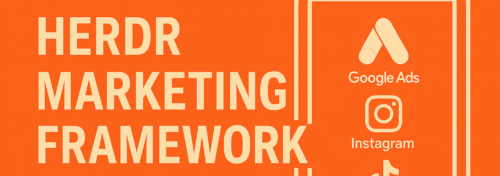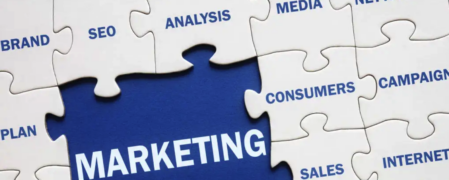The Personalization Framework in Marketing: Tailoring Experiences for Maximum Impact

In today’s hyper-competitive market, generic messaging no longer resonates with consumers. Customers expect brands to understand their unique preferences, needs, and behaviors. This is where personalization in marketing comes in, transforming one-size-fits-all strategies into tailored experiences that drive engagement, loyalty, and conversions.
The Personalization Framework in Marketing offers a structured approach for businesses to deliver meaningful, customized interactions at every stage of the customer journey.
What is the Personalization Framework in Marketing?
The Personalization Framework is a strategic guide for implementing data-driven, personalized marketing experiences. It focuses on creating relevance for individual customers by leveraging insights from behavioral, demographic, and contextual data.
Key goals of the framework include:
- Enhancing customer engagement through tailored messaging.
- Improving conversion rates by delivering the right content to the right person at the right time.
- Building long-term loyalty by fostering deeper connections with customers.
Why Personalization Matters in Marketing
Consumers are more likely to engage with brands that make them feel seen and understood. Research shows:
- 80% of consumers are more likely to purchase from brands offering personalized experiences.
- Poor personalization costs companies $756 billion annually in lost revenue.
Personalization helps businesses stand out, boost customer satisfaction, and maximize ROI on marketing efforts.
Core Components of the Personalization Framework
1. Data Collection and Segmentation
The foundation of effective personalization is data. Collect, organize, and analyze customer data to create detailed audience segments.
Key Strategies:
- Use first-party data (e.g., website behavior, purchase history) and third-party data for broader insights.
- Segment audiences based on demographics, psychographics, behavioral patterns, and lifecycle stages.
- Ensure compliance with data privacy regulations (e.g., GDPR, CCPA).
Example:
An e-commerce brand segments its audience into “frequent buyers,” “cart abandoners,” and “first-time visitors” for targeted campaigns.
2. Customer Journey Mapping
Understanding the customer journey helps identify personalization opportunities at each touchpoint.
Key Strategies:
- Map the journey from awareness to conversion and beyond.
- Identify key interaction points (e.g., email, website, social media, in-app notifications).
- Tailor content to match the customer’s current stage in the journey.
Example:
A SaaS company personalizes onboarding emails for new users and offers product tips based on usage behavior during the trial period.
3. Content Customization
Deliver dynamic content that resonates with individual customers based on their preferences and actions.
Key Strategies:
- Use dynamic email templates to adjust subject lines, images, and CTAs based on recipient data.
- Personalize website experiences with location-based offers or product recommendations.
- Integrate AI tools to automate real-time content customization.
Example:
Netflix personalizes its homepage with recommended movies and shows based on user viewing history and ratings.
4. Channel Optimization
Personalization should be consistent across all communication channels.
Key Strategies:
- Leverage omnichannel marketing to create seamless experiences across email, social media, SMS, and in-app messaging.
- Use customer preferences to determine the most effective communication channels.
- Ensure continuity by integrating CRM and marketing automation tools.
Example:
A retail brand sends personalized push notifications about nearby store promotions and follows up with an email showcasing similar online deals.
5. Testing and Optimization
Personalization is an iterative process. Regularly test and refine your strategies for better outcomes.
Key Strategies:
- Conduct A/B testing for personalized campaigns (e.g., different offers for the same segment).
- Analyze engagement metrics like click-through rates, conversion rates, and customer lifetime value (CLV).
- Use predictive analytics to anticipate customer needs and refine future campaigns.
Example:
An online fashion retailer tests two variations of a personalized email campaign, one offering discounts on past purchases and the other suggesting new arrivals.
Steps to Implement the Personalization Framework
Step 1: Define Objectives
Set clear goals for your personalization efforts, such as increasing email click-through rates or improving website conversion rates.
Step 2: Audit Existing Data
Evaluate the quality and sources of your current data. Identify gaps and implement tools to gather actionable insights.
Step 3: Select Technology
Invest in tools like customer data platforms (CDPs), AI-driven recommendation engines, and marketing automation platforms.
Step 4: Develop a Pilot Campaign
Start small with one channel or segment to validate the framework’s effectiveness.
Step 5: Scale and Refine
Expand personalization efforts across channels and segments, using insights from initial campaigns to optimize future strategies.
Real-World Examples of Personalization Success
1. Spotify’s Personalized Playlists
Spotify creates personalized playlists, like “Discover Weekly” and “Release Radar,” based on users’ listening habits. This drives user engagement and retention by delivering highly relevant music suggestions.
2. Amazon’s Product Recommendations
Amazon uses browsing history, purchase data, and user ratings to deliver personalized product recommendations. This strategy is responsible for a significant portion of its sales.
3. Starbucks Rewards Program
Starbucks leverages customer purchase data to send personalized offers through its app. For example, frequent coffee buyers might receive discounts on new beverage launches.
Challenges in Personalization
- Data Privacy Concerns: Collecting and using customer data must comply with regulations and ethical standards.
- Data Silos: Disconnected data systems can hinder effective personalization.
- Over-Personalization: Overly tailored content can feel invasive and deter customers.
- Resource Constraints: Small businesses may struggle to invest in advanced personalization tools.
Benefits of the Personalization Framework
- Increased Engagement: Tailored messaging captures attention and drives interaction.
- Higher Conversion Rates: Relevant offers and recommendations boost purchase intent.
- Improved Customer Loyalty: Personalized experiences build trust and foster long-term relationships.
- Better ROI: Focused campaigns ensure marketing budgets are used efficiently.
Future of Personalization in Marketing
Advancements in AI and machine learning will continue to transform personalization. Key trends include:
- Hyper-Personalization: Leveraging real-time data for instant customization.
- Voice and Chat Personalization: Adapting AI assistants and chatbots to user preferences.
- Predictive Personalization: Using predictive analytics to anticipate customer needs.
Conclusion: Putting the Customer at the Center
The Personalization Framework in Marketing empowers businesses to create meaningful, engaging experiences tailored to individual customers. By leveraging data, optimizing touchpoints, and continuously refining strategies, brands can drive stronger connections, loyalty, and growth.
As personalization evolves, businesses that prioritize relevance and authenticity will remain ahead of the competition.
How are you incorporating personalization in your marketing efforts? Share your experiences and insights in the comments!







